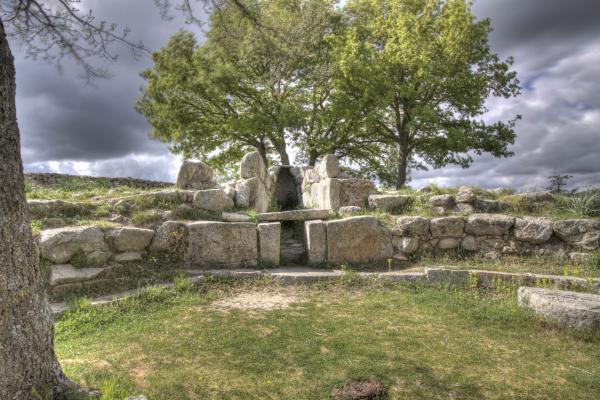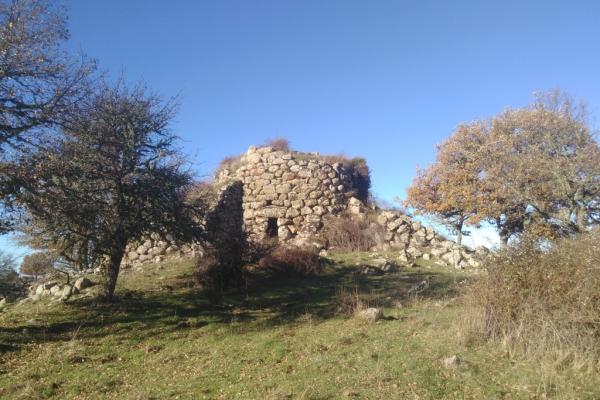Crossing the threshold of the temenos, the sacred enclosure, you will be able to imagine the amazement of the ancient visitors before the magnificence of the monument, though the most surprising aspect does not catch the eye right away and is hidden further upstream: it is the only (currently known) example of a Nuragic aqueduct that served the village and the sanctuary of Gremanu. The complex is set in a thick oak forest in the valley of Pratobello, about a thousand metres above sea level between the elevations of Gennargentu, in the territory of Fonni, the ‘highest’ village in Sardinia. The site occupies about seven hectares and is divided into two parts: inside the first, there are the wells and water sources, while further downstream are the residential and religious areas. The springs are enclosed within a semicircular curtain wall, next to which you will notice a basin, probably used for ritual purposes. A small channel directed the water from a spring to a well, then from here a system of canals guided it to the sanctuary.

Nuragic or pre-Nuragic archaeology
An extraordinary sacred ‘citadel’ on top of a mountain in Barbagia, in the centre of Sardinia, with buildings carefully positioned and distinctive features that make it unique
An extraordinary sacred ‘citadel’ on top of a mountain in Barbagia, in the centre of Sardinia, with buildings carefully positioned and distinctive features that make it unique
See this place because...
You can admire something truly unique: temples and sacred sources connected by a hydraulic system unknown elsewhere on the Island, surrounded by a wood and next to a Nuragic necropol
Ti piace questo luogo? Barbagia e Gennargentu potrebbero essere la tua meta ideale.
You may also like
More attractions in the vicinity
Nearby hotels and accommodations

Bed and breakfast (rental rooms)
FONNI
7 km

Bed and breakfast (rental rooms)
FONNI
7 km

FONNI
7 km













